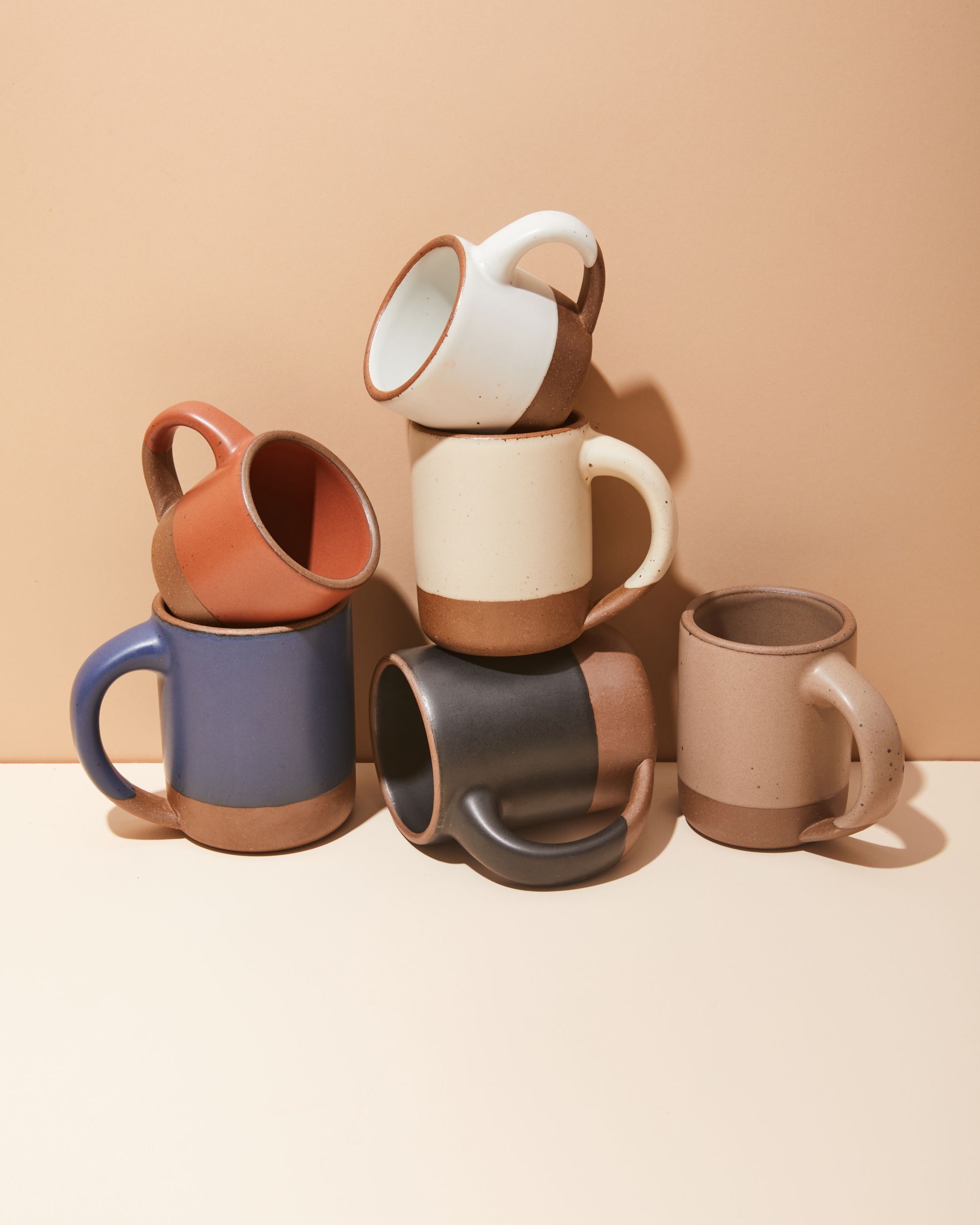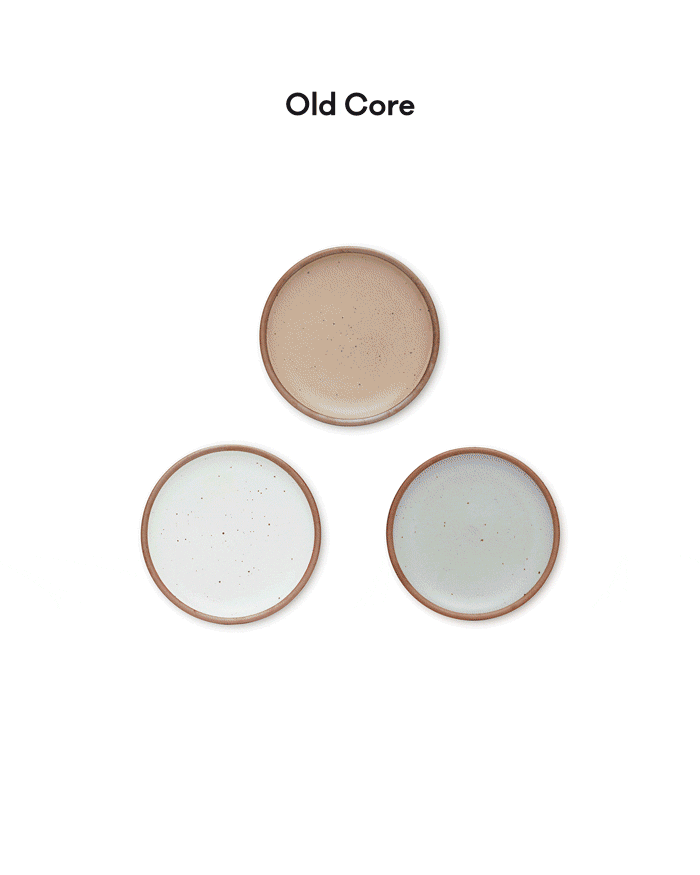
Color Theory
East Fork recently added two new colors to our core pallette, Blue Ridge and Black Mountain. Our Head of Design, Nicole Lissenden, talks through the process of adding new colors to our collection below.
Can you tell us about the evolution of core?
The very first East Fork collection (before there were really cores and seasonals) consisted of Eggshell, Morel, Soapstone, Indigo and Ember. Indigo and Ember retired, and when I started at East Fork in 2018, our core consisted of Eggshell, Morel and Soapstone. All neutrals, all on the light side. Plenty of room for growth.
When we had the capacity to add more core colors in 2020, we took a look at what we could do in the immediate, and also looked further afield to a time we’d be able to have a 6 color core. We said goodbye to Soapstone, and we welcomed Amaro and Panna Cotta.
We decided that with the next core update, we wanted 6 colors that included 3 warms, 3 cools, 3 lights, 3 darks. It took another 2 years to arrive here, but with the addition of Blue Ridge and Black Mountain, we’ve created a balanced, beautiful core palette.

How does a color become a part of the core lineup?
First, we think about it for a really long time. Just speaking to the nature of the colors, our main thing is they need to be timeless, grounded colors with broad appeal. I can see there being a medium grey and an olive green added to the core someday, but right now I’m really reveling in our lovely new palette.
The production team has generated a lot of new capacity over the last few years, which has allowed us to increase the number of colors that can be produced simultaneously. We have lots of new equipment and a team of powerhouses, and that’s made it possible for us to add colors to our core collection.
How do you decide seasonals?
We’re getting to a point where we’ve developed a lot of seasonals. This year, we started out by plotting everything we’ve ever done onto a chart more or less organized with rows going from light to dark as you go down, and columns going from warm neutrals, through the rainbow, and ending on cool neutrals. It helped us to visualize what we’ve done a lot of, and what is missing.

Also - some of our really amazing past seasonals came on at a time where a lot of our customers hadn’t yet found East Fork. Or maybe we did a very limited run of something and feel like it would perform well as a seasonal. Strategically bringing back past seasonals factors into the plans in a pretty big way.
Is it hard to come up with a new color?
It’s so hard! We started the process this year sure that we wanted to bring on a sage green as one of our Spring '23 seasonals. After going back and forth with our materials team and seeing lots of really beautiful sage variations, we just couldn’t get to a place that felt far enough away from some of our other recent cool colors. So even if the color is right, it may not be the right time for it. And once you change one thing in the lineup, the entire year needs to be reassessed.
Perhaps I should, but I don’t do a whole lot of evaluation of color trends. Connie has a much more sophisticated sense of recognizing and predicting (and creating!) trends. Her gut feelings about what our customers will love is also a big part of our process. I’m mostly thinking about the ecosystem of East Fork colors, so that each new color we make can work with the pots that people already have in their homes. And if we’re going to make a new purple, how do we ensure it has just the right amount of blue or red or white to differentiate it from a previous purple. With our powers combined, we set out to make a yearly palette that makes sense seasonally and as a whole.
And then, once the color is conceptualized, Sara and the materials team do the hard work of bringing the ideas to life. They manage all the “I like this but it needs more yellow/blue/opacity” comments with grace. I can only imagine the balance of left and right brain thinking that their job takes. Connie and I can think about color theory and pretty pairings all day, but the material sciences team and later the glaze team make the colors into something we can hold.

How does color play into your job and day to day life?
One of my favorite things about this job is that just living in this world is a way to explore and evaluate color options. When I go on a hike, when I go shopping or walking around town, when I watch my kids mix paints - the color part of my brain is never off. I find it endlessly fascinating that we can only see part of the full color spectrum, and our idea of reality is tied to this falsehood. Alas, there are still plenty of visible-to-human colors left for East Fork to explore.
PSA: For other color lovers “I love Hue” is a really fun app to challenge your color vision.

